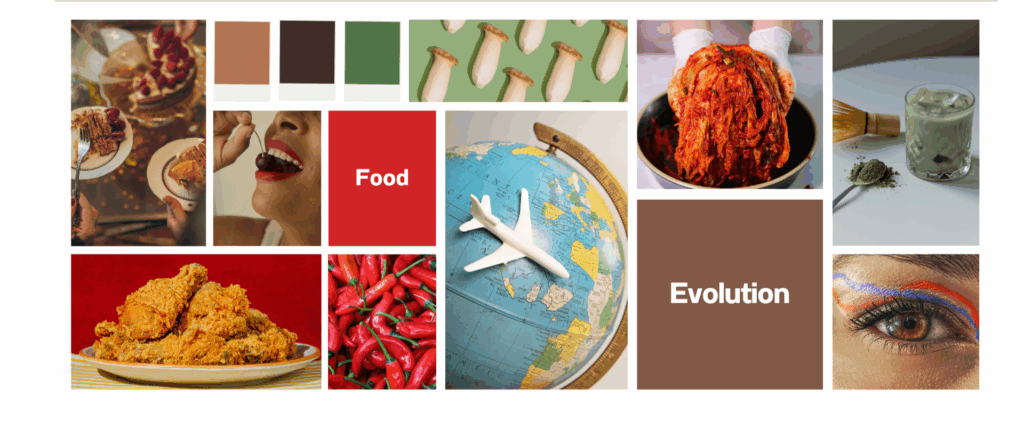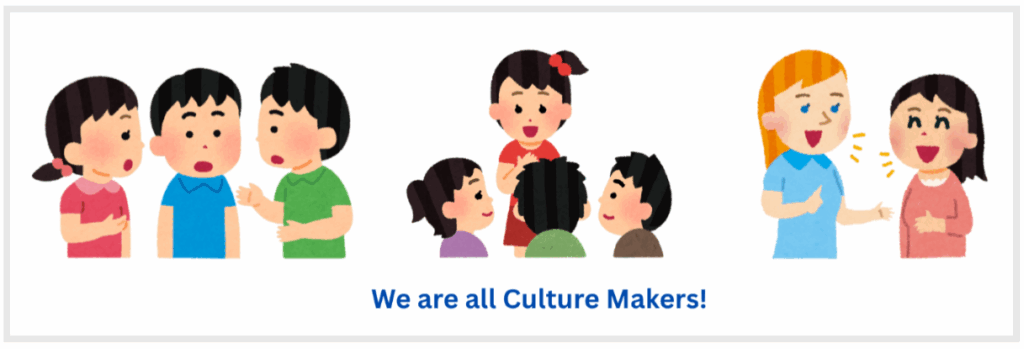
During a marketing internship with Cultural Infusion, Laura Lao shares her observations of cultural differences from the view of evolutionary psychology. In this article, she reveals not only the common history of humanity through food culture, but also our positive role as ‘cultural makers’.
Food is far more than making a living; it is a powerful lens through which we can observe the dynamic processes of cultural evolution. Human beings are highly adaptable to their environment and can make behavioural adaptations in response. These behaviours are transmitted from one individual to another through social learning. Transformed over time and across geographical boundaries.
Evolutionary Psychology
In the past, some of our behaviours existed because they were needed for survival or reproduction. Nowadays, although we do not need these behaviours anymore, they are in our genes or in our bodies over time. Evolutionary psychology is like evolutionary biology: we do not need wisdom teeth to bite through hard food, but they exist in our body and often we need to extract them.
Culture
People have their unique cultures because they grow up in different countries and environments.
Evolutionary Psychology + Culture = Cultural Evolution
Culture is changed through social learning or genetic inheritance. Or a culture becomes more powerful and spreads to another place.
For example: Food Culture.

Why some people can eat spicy food and others cannot
In the past year, I have visited South Korea several times. I found that the people there really like kimchi. Almost every meal has kimchi in it. The reason for this is that to solve the problem of lack of vegetables in winter, Koreans came up with the idea of pickling vegetables with salt to eat.
Even in my city, Macao, my family members and I cannot eat very well spicy food. When I had dinner with some of my friends from Sichuan and Beijing, which are northern cities in China, I found that they preferred and were better at eating spicy food. This is also since it is cold in the north, so people there used to eat spicy food as the easiest way to keep warm. Even though this is no longer necessary because of modern heating, the behaviour is in their genes and has led to a preference for spicy food in the North. This is the reason for our small cultural differences.
Cultural evolution is when culture changes. Through observing the different food cultures, I realised that some cultures have a long history.

Why different cultures are created and the role of food in cultural integration

Culture can spread and is the way of communication. When saying evolution, most people only think of time. But cultural evolution is not just a timeline; there are other branches.
In the Uncertainty Avoidance Index (UAI) of Hofstede’s Cultural Dimensions Theory, the degree of anxiety about unclear, uncertain, or unknown situations can be divided into High UAI-scoring countries and Low UAI-scoring countries. In the case of food culture, if a country is High UAI-scoring, it will have more restaurants with local flavours.
When I walked on the street in Korea, most of the restaurants I saw were around fried chicken and spicy rice cake, and there are only a few restaurants with food from other countries. And when I found the UAI scoring, South Korea has a score of 85. The UAI-scoring of China is 30. Therefore, the streets in China always have different food while Korea has more Korean cuisine.
Food can reinforce the sense of identity. People can communicate with each other through food, and this is another way of cultural integration.
Will there be an end to cultural evolution?

Technological advances and social media can make it easier to get in touch with people nowadays. Cultural ideas and values can be quickly exchanged, even across long distances. This growing connection fosters cross-cultural understanding, allowing people to learn and appreciate. Technology is also providing new ways of expressing culture, for example, virtual reality, online museums, and e-learning.
When more and more new forms of culture are appearing, the transformation into new forms of expression is also a new cultural experience and reaches far and wide. Just as artists should not be limited by where they come from, people from different regions should have the opportunities to express their art.
I believe culture is due to the region, and the people who bring culture to a place. We can learn a lot from other cultures, and we can also share our cultures with others. Together we can progress, together we can learn. We are all culture makers. This is what I think of as cultural evolution.

Enjoyed this post? Read Laura Lao on ‘Exploring the Impact of Intercultural Understanding and Cultural Programs on Wellbeing‘!
Share this Post

